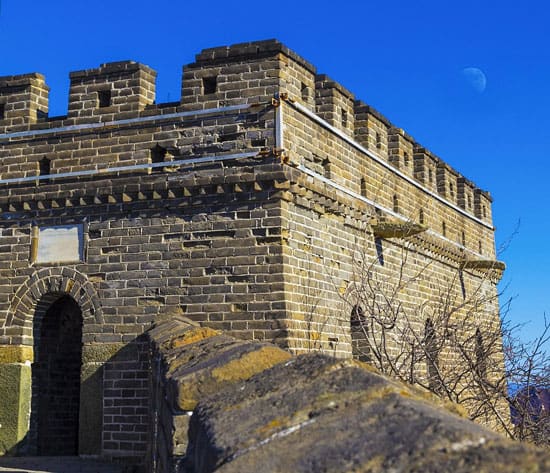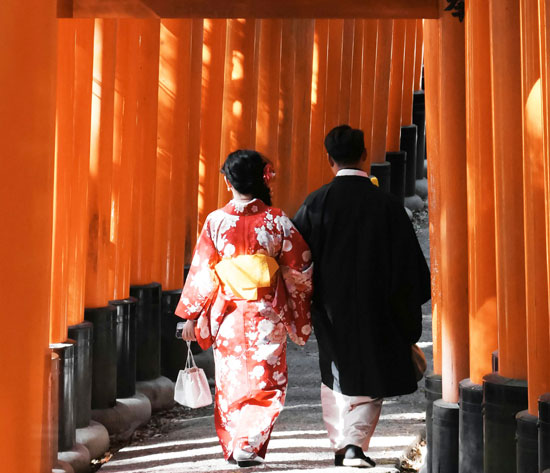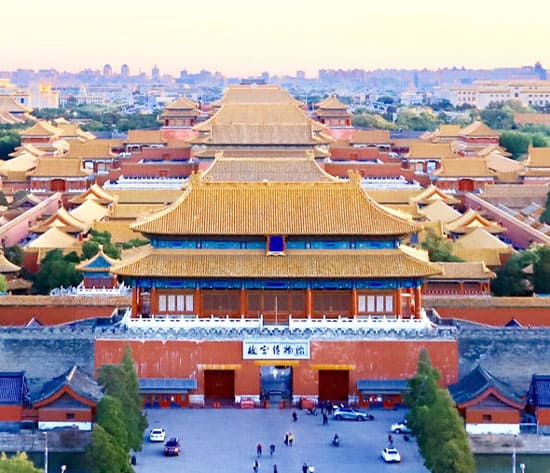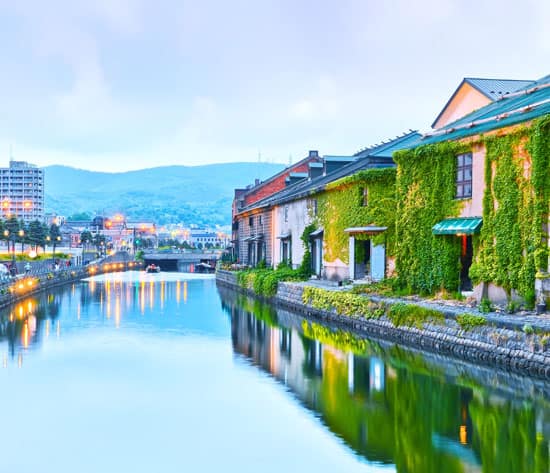China Great Wall is the longest in the world. According to the Great Wall Resources Survey released by the State Administration of Cultural Heritage and the National Bureau of Surveying and Mapping, the Wall stretches and winds for 21,196.18 (13,171 miles). The Ming Great Wall has a length of 8,851.8 km (5,500 miles). The Great Wall was built by the Qin Dynasty and the previous dynasties and reached over 10,000 km (6,213.7 miles).
Table of Contents
The Great Wall’s Geographic Location
Famous Sections and Locations
Historical Evolution: Dynasties That Shaped Its Path
How to Get to the Great Wall
Why the Great Wall’s Location Matters
The Great Wall’s Geographic Location
Across 15 Provinces and Regions
The Wall meanders through over 10 cities and provinces, including Hebei, Beijing, Tianjin, Shaanxi, Shanxi, Gansu, Inner Mongolia, Heilongjiang, Jilin, Liaoning, Shandong, Henan, Qinghai, Ningxia, Xinjiang, Hunan, and Sichuan. For now, there are 43,721 sites still existing in total. The construction and restoration process has lasted over 2,000 years. But some sections are still well-preserved today, and most of them are located in North China, especially in Beijing.
The Great Wall exists in Southern China as well, called the Miaojiang Great Wall, which is situated in Hunan province. It is the only section of the Great Wall building in the south; therefore, also known as the South Great Wall. The Wall, measuring 190 km (118 miles), lies on the precipitous ridges, which differ from the North Great Wall; it was constructed for preventing from Miao people, instead of against northern nomads. When it comes to the Qing Dynasty, it underwent renovation based on the original section.
Coordinates and Satellite Visibility
The Great Wall of China is undoubtedly the most wonderful and longest man-made structure. It was measured at 21,196.18 kilometers (13,171 miles) long, and located in northern China of the northern hemisphere. But it is hardly possible to see it from outer space with naked eyes, due to its narrow width, an average of 6.5 m (21 ft), and possible earth-integration. However, it is identifiable via satellite imagery or observed by devices with high resolution.
Eastern and Western Terminals
When talking about where the Great Wall of China is located, most people will think of Beijing. It sits in Beijing for most of the Ming Great Wall. To be precise, the Great Wall stretches through the western and eastern parts of China. The Great Wall of China meanders from the Shanhai Pass in the east to Jiayu Pass in the west. The Ming Great Wall starts from the Jiayuguan Pass, Gansu, in the west, to the Hushan Great Wall, Liaoning, in the east.
Jiayuguan sits in Gansu province. In addition, it is close to the middle section of the Hexi Corridor, a place of strategic importance. As one of the most important passes of the Walls, this impressive pass was built in the Ming dynasty to resist invasions.
About where the Great Wall ends, most people will first think of the Shanhaiguan Pass, which connected the central plain with Northeast China. However, it was later found that the Hushan Great Wall was linked with Shanhaiguan and extended over 1,000 km (620 miles). Therefore, the Great Wall ends at the Hushan Great Wall.
Famous Sections and Locations
As mentioned above, most parts of the Great Wall lie in Beijing. But where exactly is the Great Wall of China located? Here are the locations of some famous and well-preserved sections of the Great Wall.
Most Accessible & Popular Sections
Mutianyu Great Wall is located in the Huairou District of Beijing. It is seen as the essence of the Ming Great Wall and reputed to be the most beautiful section due to its breathtaking scenery, with 96% vegetation coverage. Besides, Mutianyu belongs to the densest cluster of the Great Wall, characterized by the double-sided parapets, a unique design of the Wall.
Jinshanling Great Wall is located in Chengde, Hebei. It is considered the prime section of the Great Wall and a hikers' paradise. Moreover, Jinshanling features seasonal landscapes, architectural marvels, and photogenic vistas, therefore, it is considered the Paradise of Photographers. Covering a variety of watchtowers, including 67 watchtowers and 5 passes, Jinshanling is also an ideal attraction for historical freaks.
Badaling Great Wall is located in the Yanqing District of Beijing. The most representative section of the Ming Great Wall and the most popular destination among travelers. It carries a great diplomatic significance and has received many foreign VIPs since 1957, including George H. W. Bush, Kliment Voroshilov, Nixon, Obama, and Queen Elizabeth II of the UK.
Simatai Great Wall is located in the Miyun District of Beijing. The Wall is the only section being preserved as it was, renowned for its steepness, queerness, and intactness, which is pretty suitable for adventurers. This most authentic section is the first section, opened to the public to enjoy its fascinating night view.
Jiayuguan Pass is located in Jiayuguan, Gansu. As the western end of the Ming Great Wall, it is one of the most important passes. Jiayuguan sits on the Jiayu Mountain, the highest point, and its walls on two sides cross the desert, offering a perfect backdrop for shutterbugs. Among all the passes of the Great Wall, it is one of the most complete.
Lesser-Known Sections for Adventure
Jiankou Great Wall is located in Huairou, Beijing, having an altitude of 1,141 meters. Lying on the bluffs and steep terrain, its winding shape is like a “W”. Jiankou got the name, as it seems like a bow of an arrow from a distance. Known for its steepness, it has become the most photographed piece of the Great Wall album.
Shanhaiguan Pass is located in Qinhuangdao, Hebei, also called Yuguan. Shanhai Pass is not only known as the First Pass Under Heaven but also as a complete defensive system. As the first pass in the easternmost most of the Ming Great Wall, it is also famous as “The First Pass under Heaven”. It was listed of the first National Key Cultural Relics Protection Units in 1961.
Yanmen Pass is located in Dunhuang, Gansu. It is one of the most important passes of the Silk Road, which was built in the Han Dynasty (202 BC- 220 AD). Ranked as the top of the Nine Passes under the Heaven, it was named a 5-A level tourist attraction, and the Four Ancient Passes in China, together with Hanguguan, Xianxiaguan, and Jianmenguan.
Historical Evolution: Dynasties That Shaped Its Path
Early Walls (7th-8th Century BC)
During the Spring and Autumn Period and the Warring States Period (770-221 BC), the ruler of the Qi state built the wall along ridges, meandering over a thousand li (500 km), to defend against the Chu State.
Qin Dynasty (221–206 BC)
The first Emperor from the Qin Dynasty, Qin Shi Huang, unified the walls of six states, initially forming the Great Wall and laying the foundation for a military defensive system. The Wall extends over 10,000 li (5,000 km), which is the reason why it was named Wan-Li Changcheng (Ten-Thousand-Li Great Wall). It was built to protect the country from the invasion of the northern Xiongnu.
Ming Dynasty (1368–1644)
Going through thousands of years’ ups and downs, the Great Wall underwent massive reconstruction and extension in the Ming Dynasty, taking more than 200 years. A lot of watchtowers were built during this period. With the development of technologies, most sections were built with bricks. This is the last time to construct the Wall on a large scale.
How to Get to the Great Wall
Most Great Wall we know is located in Beijing city or near Beijing. Therefore, visitors usually embark on the Great Wall trip from downtown Beijing. Most of them are accessible from Beijing by public transportation. The table below enumerates the means of traffic and the time needed.
From Beijing
Great Wall section Time needed Transportation alternatives Badaling 30 mins-3 hrs By Bullet train, Tourist Bus, City Bus Mutianyu 1.5-3 hrs By Tourist Bus, City Bus Juyongguan 1.5-2 hrs By Tourist Bus, City Bus Jinshanling 2-3 hrs By Bullet train, Tourist Bus, City Bus Jiankou 2.5-3.5 hrs By City Bus Simatai 2.5-3.5 hrs By Bullet Train, Tourist Bus
In addition to the ways mentioned above, you can start your trip to China with the assistance of Hi Five Trip for convenience and flexibility. Our tour guides and drivers could provide you with professional guided tours and private transfers to save more time to maximize the trip.
From Other Cities
If coming from other adjacent cities, tourists can take the high-speed train under most conditions. For instance, Xi’an is connected via high-speed rail to Beijing. For people who plan to go to Jiayuguan, it is accessible via flights or trains to Gansu province. For visitors coming from farther places, you can take flights to arrive in Beijing first, then transfer to the next destination through bullet trains, tourist buses, or city buses.
Why the Great Wall’s Location Matters
The Great Wall of China carried strategic defense significance in ancient times. Most of the walls were built along the precipitous mountain ridges or the border of ancient states, aiming to block northern invasion from the Mongols or the Xiongnu. Some segments integrate natural barriers, like deserts and cliffs, with military architecture. Those natural shields could block part of the enemies and consolidate the defense capabilities.
Tour the Great Wall of China with Us
Can’t wait to start a trip to China? It is recommended to explore more highlights in Beijing. Feel free to contact us, you can have a hassle-free journey and fully experience it. Here are some of our best-selling China tour packages, including the Great Wall of China:
Hi Five Trip can also offer you a tailor-made tour service according to your requirements and schedule to enrich your trip.







Have a Question?
You might see your comment appear on this page, but your email address and full name will not be published. Your personal information will remain confidential. Our Asia travel experts will get back to you as soon as possible. Required fields are marked *